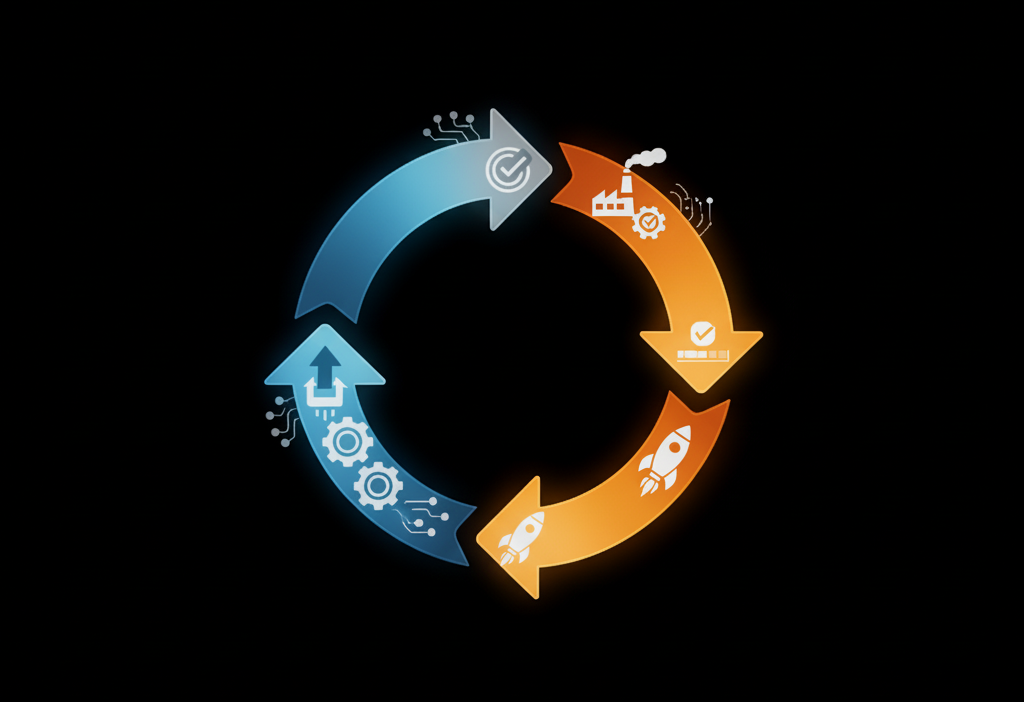Blog
Case studies, strategies, and ideas shaping modern technology.
Why Platform Engineering Is So Much More Than Backstage.io

Over the past few years, Backstage.io has become almost synonymous with platform engineering. Originally developed at Spotify and now an open-source CNCF project, Backstage provides a powerful framework for building internal developer portals and service catalogues.
It’s not hard to see why it caught fire — it offers visibility, self-service, and consistency, three things product teams crave. But there’s a deeper reason organisations are drawn to it: they’re looking for a way to tame cost and complexity.
The problem is, installing Backstage doesn’t automatically make software delivery simpler or cheaper. Too often, teams equate “putting in a portal” with “doing platform engineering,” and end up adding another layer to an already complex landscape.
Let’s unpack what platform engineering really entails — and how the best teams use it to contain complexity and drive sustainable cost efficiency.
1. The Platform Is a Product, Not a Portal
At its core, platform engineering is a product discipline. If the goal is to create an internal developer platform (IDP) — it means providing a curated set of tools, services, and workflows that help developers deliver software quickly, reliably and safely.
It becomes a mindset change to thinking about your developers as customers and treating the platform as a product that reduces friction, not adds to it. Every unnecessary step, tool, or configuration increases complexity — and complexity is expensive. It slows delivery, increases operational load, and multiplies hidden maintenance costs over time.
A developer portal like Backstage can help expose and organise those tools, but the real efficiency gains come from what happens underneath — the automation, standards, and guardrails that make delivery faster and safer.
Without that foundation, Backstage can become another interface on top of fragmented, inconsistent systems — a pretty UI masking costly sprawl.
2. The Real Foundation: Abstractions, Automation, and Guardrails
I’m involved in a number of groups and conversations about platform engineering and making it a success, and every conversation I’ve had about portals is that they’re nice and even important, but they only play a small part of the overall picture. The most effective platform teams focus first on abstractions and automation — the things that reduce cognitive load and operational complexity.
Typical capabilities include:
- Infrastructure Abstractions: Developers don’t need to understand Kubernetes manifests or Terraform modules. The platform handles provisioning through APIs or templates that enforce consistency and eliminate one-off work.
→ Impact: reduced learning curves, fewer snowflakes, lower support cost. - Continuous Delivery Foundations: Reducing pipeline complexity and proliferation to declarative configuration-as-data (or just very simple, re-usable and consistent CI/CD pipelines), deployment strategies, and rollback mechanisms make delivery predictable. Opinionated but flexible systems prevent drift and simplify troubleshooting.
→ Impact: lower operational risk and cost per deploy. - Observability and Reliability: Centralised logging, tracing, and metrics let teams monitor services with minimal setup. Defined “golden paths” for SLOs and alerting reduce firefighting.
→ Impact: faster recovery, less time wasted chasing issues. - Security and Compliance: Policies and scanning are integrated from the start — not added after the fact.
→ Impact: less manual effort to stay compliant, and fewer costly surprises.
When these layers are automated and reliable, then it makes sense to surface them through Backstage. Until then, a portal just exposes the very complexity the platform is supposed to remove.

3. Backstage’s Role — and Its Limits
Backstage is a great unifying layer. It brings visibility and self-service to fragmented systems, making it easier for developers to find what they need. But it doesn’t standardise or automate on its own — it only displays what exists.
If your CI/CD, infrastructure, or observability practices aren’t consistent, Backstage will just mirror that inconsistency.
In that case, you’ve added another layer to maintain, which means more cost, not less.
That’s why mature platform teams treat Backstage as a frontend to a platform that already simplifies delivery. It’s the interface to something solid — not the foundation itself.
4. The Human Element: Empathy and Collaboration
The hardest complexity to manage isn’t technical — it’s human. Every extra decision a developer has to make, every unclear ownership boundary, every manual process adds cognitive load. That’s real complexity, and it’s expensive in both time and morale.
Good platform teams actively work to reduce that. They:
- Run user interviews with developers to find pain points.
- Collect feedback and run town halls or workshops to guide improvements.
- Track experience metrics like time to first deploy and mean time to restore.
- Produce clear, practical documentation for common workflows.
This kind of empathy-driven approach ensures the platform reduces effort rather than adding bureaucracy. A platform that’s easy to use is one that pays for itself — because time saved is cost saved.
5. The Evolutionary Journey of a Platform
Most successful platforms evolve through a few recognisable stages:
- Infrastructure Enablement — Automating the provisioning of compute, storage, and networking with tools like Terraform, Crossplane, or Pulumi.
- Delivery Standardisation — Defining reusable CI/CD templates, quality gates, and policy-as-code frameworks.
- Developer Experience Layer — Introducing portals (like Backstage), templates, and golden paths that reduce friction.
- Insights and Optimisation — Tracking usage, productivity, and satisfaction to guide future improvements.
Each stage removes manual work and reduces variance. The result is a system that gets cheaper and simpler to operate as it grows — not the other way around.

6. Measuring Success Beyond Tools
Platform success isn’t about how many developers use Backstage, or how many plugins you’ve integrated. It’s about measurable impact on flow and efficiency.
Look for indicators like:
- Shorter time-to-market for new services and overall product quality
- Reduced lead time for changes
- Fewer incidents caused by misconfigurations
- Lower cognitive load for developers
- Improved developer experience
- Improved reliability and compliance without more headcount
If you’re seeing steady simplification, fewer exceptions, and faster delivery, your platform is doing its job.
7. The End Goal: Flow Efficiency
Ultimately, platform engineering is about enabling sustainable speed.
It’s not about building more systems — it’s about simplifying delivery so that developers can move from idea to production quickly, safely, and repeatedly, without creating long-term debt.
When the right abstractions, automation, and guardrails are in place, flow improves naturally. Backstage can help visualise and surface that flow — but it’s the foundation underneath that keeps costs down and complexity contained.
8. Conclusion

Backstage has helped bring attention to the platform engineering movement, and it remains a strong tool for building developer portals. But platform engineering isn’t just about tools — it’s about control, efficiency, and scale.
The best teams start by simplifying, not adding. They focus on removing friction, automating repetitive work, and building opinionated systems that stay simple as they grow. That’s how you reduce both cost and complexity over time.
When those foundations are in place, a portal like Backstage becomes a powerful window into a platform that already works — not a patch for one that doesn’t.
In other words: don’t just build a portal.
Build a platform that makes software delivery simpler, faster, and cheaper for everyone who uses it.
Thinking About Your Platform Journey?
Whether you’re just starting with Backstage or looking to build a full internal developer platform, our team has helped organisations streamline developer workflows, boost velocity, and reduce friction.
Get in touch — we’d be happy to discuss what a modern platform could look like for you.

